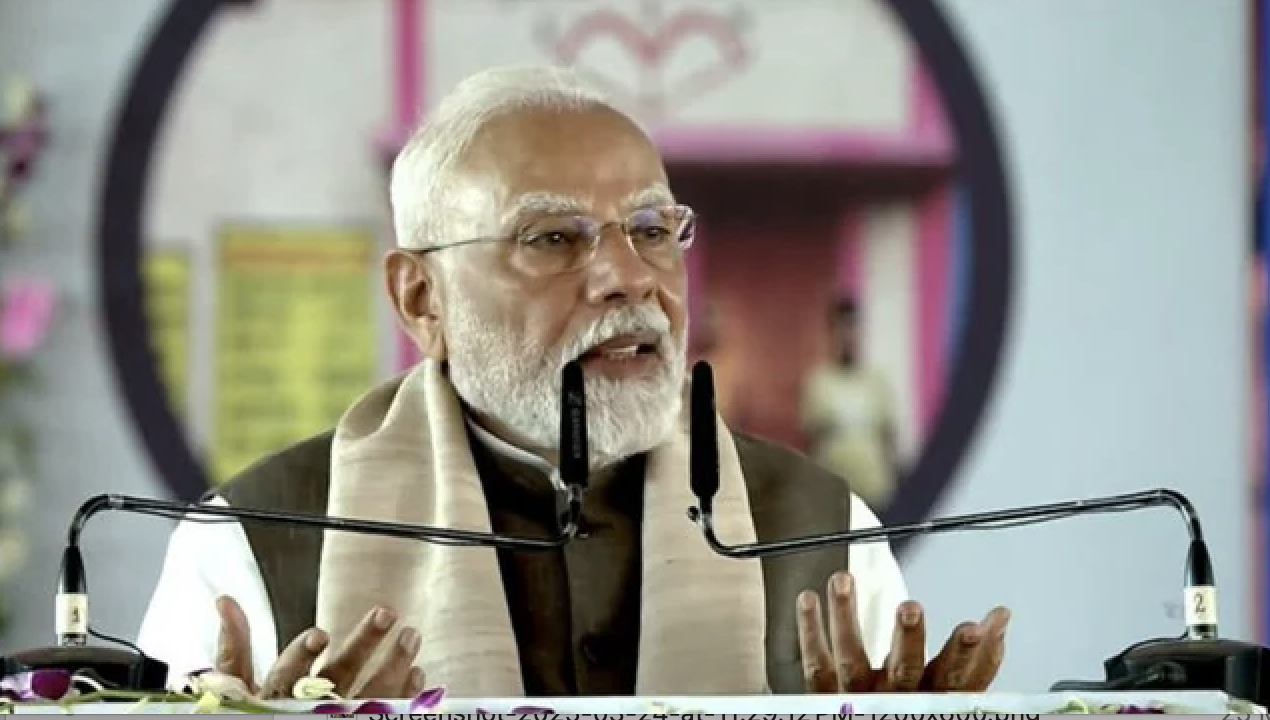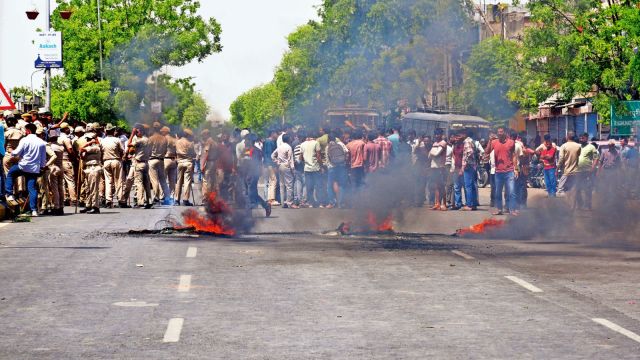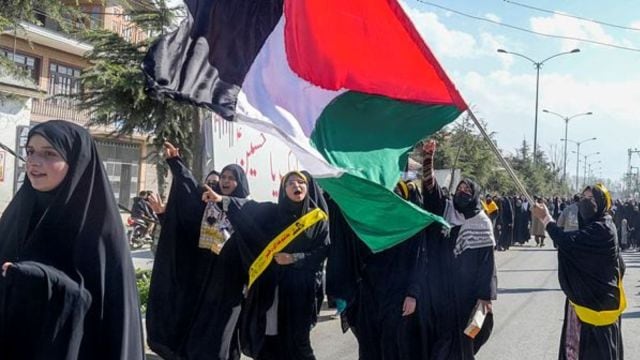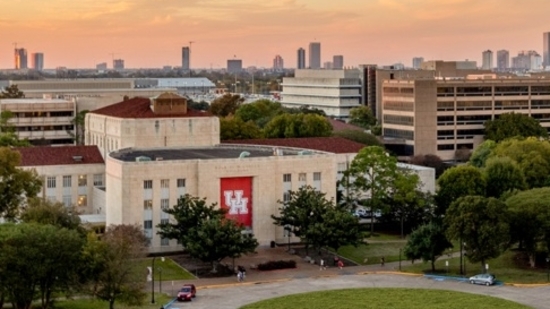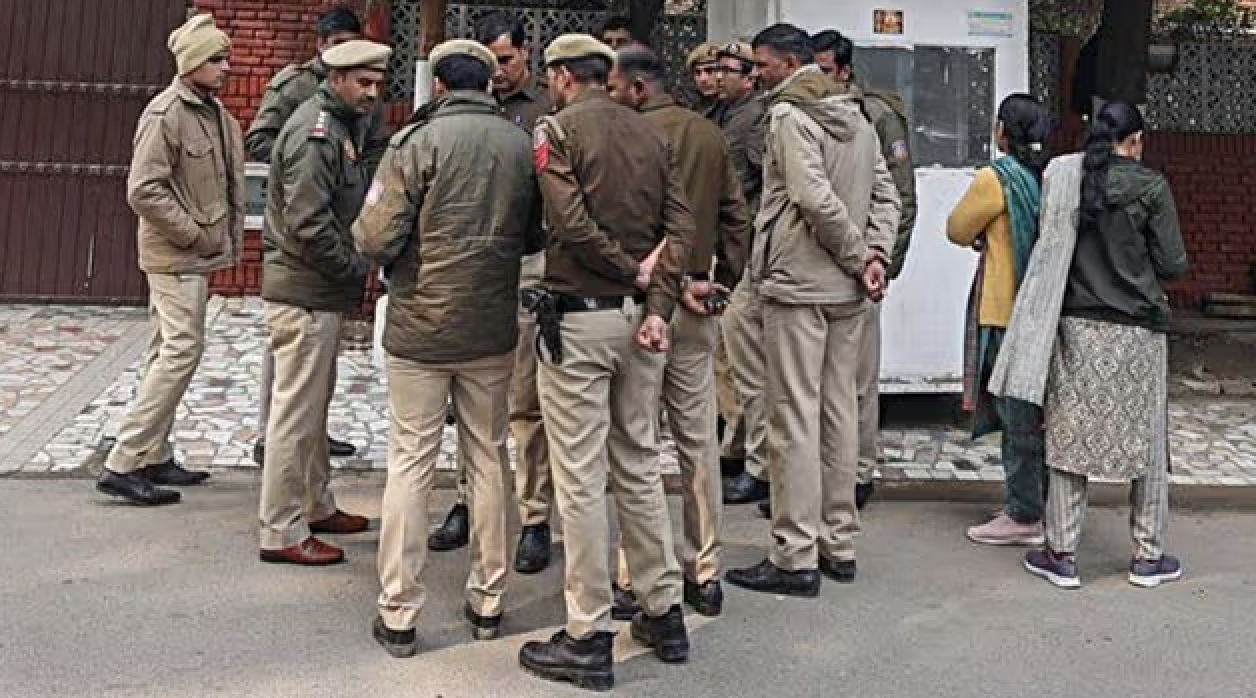
By Harsh Mander / The Wire
This article is extracted and adapted from the author’s book Between Memory and Forgetting: Massacre and the Modi Years in Gujarat, Yoda Press, 2019.
Twenty dusty summers have scorched the state of Gujarat since 2002, the year when large parts of the state were seized by one of the most gruesome communal massacres since India’s independence. At that time, a malevolent tempest of hate violence swept over 20 out of the 25 districts of Gujarat for several weeks, persisting in some places for months, as state officials chose to do little to stem or control the violence. More than 1,000 persons, the large majority of whom were Muslim – unofficial estimates are as high as 2,000 – were slaughtered.
The killings were exceptional not just for their numbers but for their ferocious brutality and for their ruthless targeting of women and children. Mass rape, sexual humiliation of women in public, and the battering and burning alive of girls, boys, women and men, marked those grim and overcast days. Tens of thousands of homes and small business establishments – petty shops, wooden carts, auto-rickshaws, taxi jeeps, eateries and garages – were set aflame, and cattle and lifetime savings looted. Hundreds of religious shrines were desecrated and destroyed in this carnage. All of this was only for one crime: the god they worshipped.
The man, Narendra Modi, under whose watch, as chief minister, the gruesome pogrom unfolded, was elected triumphantly to lead the country a dozen years later, in 2014, and again with an even larger majority in 2019. The party that he led achieved in these two successive elections the first single-party majorities in India’s Parliament in decades.
Attempts to indict chief minister Narendra Modi for abetting the massacre by directing police officers to not act, and also inciting communal violence by spreading inflammatory statements and hate speech against Muslims, have been rejected by investigators and courts on grounds that there is no ‘prosecutable evidence’ against Modi. From a time when he was denied visas and legally barred for over a decade from entering many countries of the world because of his alleged role in the massacre of 2002, he has been warmly welcomed by heads of states and governments around the world after 2014 and quickly become India’s most-travelled prime minister within his first two years in office.
Many in India and the world were convinced that with his ‘clean-chit’ from the country’s criminal justice system, and his resounding election victory in the world’s largest democracy, the ghosts of the massacre of 2002 had finally been laid to rest. But have they really been rested?
It is sobering to remember that every second Indian is below the age of 25 years. She therefore was born after the demolition of the Babri Masjid in 1992, a historic upheaval significant not just as a bellwether of the mounting power and influence of majoritarian politics in India, but the first triumph of Hindu supremacist nationalism in India’s bumpy journey as a republic. Every second Indian was born and raised in times of aggressive majoritarianism, and also in neoliberal India, with no memory of another country, as it was imagined, and imperfectly lived. More than half of today’s young Indians were not even born or were children in 2002. They have little or no recollection of the blood-drenched massacre in Gujarat that paved the way for the meteoric political rise of Narendra Modi.
A sustained battle for the soul of new India began at least a 100 years earlier, when the Hindu Mahasabha was founded. Originally called the Sarvadeshak (All India) Hindu Sabha, it was constituted during the Kumbh Mela in Haridwar in 1915. It was renamed the Akhil Bharat Hindu Mahasabha in 1921, and came under the influence of men like V.D. Savarkar, who was decades later suspected to be the mastermind behind the assassination of Mahatma Gandhi. The Hindu supremacist Rashtriya Swayamsevak Sangh (RSS), committed to the ideal of a Hindu nation, was formed in 1925. While the Indian National Congress led by Mahatma Gandhi battled the colonial powers for India’s freedom, the Hindu Mahasabha and the RSS fought for their own version of India, for a nation that is of and for the (upper-caste) Hindus, in which Muslims, Christians and indeed Dalits and Adivasis would be allowed to live only as second-class citizens. The majority of Hindus and Muslims, and indeed people of every faith, caste and language, however, endorsed a very different idea of an India which would belong equally to people of every faith, caste, class and gender.
The assassination of Mahatma Gandhi in 1948, just months after India’s freedom, by a man reared in the ideology of the Hindu Mahasabha and RSS, led to a period of popular revulsion to the Hindutva ideology. The RSS was banned in the early years of India’s Independence, and retreated into the shadows of public life. Its return to mainstream politics began at the time when socialist leader Jayaprakash Narayan invited the RSS to join a large alliance to battle the corruption and authoritarianism of the Congress led by Indira Gandhi, and later during the Emergency. The first decisive triumph in its battle for an alternate idea of India, a Hindu rashtra, was won in 1992 when the domes of a medieval mosque in Ayodhya were brought down by frenzied mobs, cheered by leaders who would soon rule India.
Every second Indian, born after that seismic moment, has therefore lived only in the times of the rise, and rise, of Hindutva nationalism. They have no recollection or experience of the India of Gandhi, Ambedkar, Nehru and Maulana Azad, of an India with a living tradition, even if flawed in its realisation, of secularism and pluralism.
Yet many people believe that the wounds of 2002 have been healed, and that recalling the grisly and cruel mass hate crimes of those months, as we do here 20 years later, serves no purpose except to rekindle memories that are best forgotten, that should be laid to rest for good. However, I am convinced that the country and the world cannot morally choose to forget, let alone condone, the extensive bloodletting in the communal carnage of 2002, or any communal carnage including that of the Sikhs in 1984, unless the survivors of the slaughter themselves are able to heal and freely choose to ‘move on’.
This healing and moving on will be possible only if there is public acknowledgment, public demonstrations of remorse, due, just and compassionate reparation, and finally fair justice that holds to account those who planned, enabled, and executed the massacre. For the 2002 massacre, not only have none of these occurred in any substantial measure, but instead the exact opposite was deliberately accomplished. Instead of acknowledgement, there was denial; instead of remorse there was celebration and pride (including the Gaurav Yatra); instead of reparation there was the forced ejection, ghettoisation, impoverishment, and boycott of the survivors; and in place of justice there was a systematic and malign subversion of the truth of this carnage.
Human beings can heal from great injury and loss. But I have observed that there are some wounds – these are lacerations of the soul – that do not heal even as years, decades, or even a lifetime passes. These soul-wounds are inflicted by crimes motivated by hatred, where you are stricken and dispossessed for who you are rather than what you have done. I have seen these among survivors of mass communal violence in Nellie of 1983, in Delhi of 1984, in Bhagalpur of 1989, in Gujarat of 2002, in Kandhamal of 2008, in Kokrajhar of 2012, in Muzaffarnagar and Shamli of 2013, and among survivors of lynching carried out in the years since 2014, in the name of protecting cows, or love jihad or because of belonging to the hated religious identity of being Muslim or Christian.
There is indeed something about violence that is seeded in mass hate that causes injuries to fester long after most others mend and cure. The loss of loved ones, the destruction of one’s home, the extinction of one’s lifetime savings and the abrupt ruin of an entire way of life are in themselves torments. If these are seen as acts of God or nature, it is more possible over time to come to terms with these losses and perhaps to find some kind of closure. But if all that I love has been crushed, destroyed, snatched away at the hands of one’s neighbours, people I knew and trusted, or strangers with whom I had no enmity, these gashes on the soul do not heal or mend.
In Chaklasi village in Kheda in Gujarat, an elderly widow refused to be cowed down by threats or lured by inducements: she insisted on testifying against her neighbours who had looted and burnt her house. In particular she wanted to see punished a young man who was her best friend’s son. ‘She was my neighbour and he was her son. We were dear friends, and the boy virtually grew up in my house. He was an inseparable friend of my son. He would eat in my house, and play all day there. I have seen him grow from boy to man. I have raised him with and like my own son; I never saw any difference between him and my boy. And yet he led the mob to loot and burn down my house.’
She pursued her case in court with my colleagues doggedly, with single-minded determination. The day came when she had concluded her testimony in the court. The judge asked her if she could identify the accused person from among those gathered in the court. She pointed to a young man who sat with his head bowed on a bench in the crowded court-room. ‘Beta, Lalla, uth,’ she said, her voice breaking. She addressed the young man as her son, by his nickname Lalla, and asked him to rise. She said to me when I met her later that I know his real name, but for me he is still Lalla, my son. Yet I must see him punished.
My colleague Altaf, who was present in the court at that time, said a hush descended in the court as she spoke these words. Many eyes were moist. Even the judge was visibly moved.
Another widely shared assumption is that after the electoral endorsement months after the carnage in 2002 and categorical electoral victories in the Gujarat state assembly elections in 2007 and 2012, ‘normalcy’, economic prosperity and peace were restored to the ravaged state of Gujarat. But I made repeated journeys almost every month for over a decade after 2002 into Gujarat – and for nearly one year I relocated to Ahmedabad – to try to help the survivors fight for justice. I observed through these many years the frightening face of what I described as a ‘counterfeit peace’, built on a resigned social acceptance of settled fear, unequal compromises, and the practices of enforced second-class citizenship.
A dozen years passed between the hate carnage and, using the words of Bertold Brecht,Modi’s ‘resistible rise’ to the office of the leader of the world’s largest democracy. Much water had flowed through the Sabarmati River in the capital city of Ahmedabad which saw the most extensive violence in 2002. The city, as much as the state of Gujarat, is today bitterly, and I fear now permanently, divided. Muslims are forced to live in segregated ghettoes, which are poorly serviced by public utilities and infrastructure, targeted even in their livelihoods of selling cooked meat. There was talk even of changing its name, because it includes the name of its Muslim founder Ahmed. In the new normalcy of Gujarat, Muslims have had to learn to live separately, submissively and fearfully, as second-class citizens, much like Dalits who have been forcibly subjugated for centuries.
The carnage in Gujarat is also characterised by the far-reaching impunity, or the withholding of justice, against the perpetrators of the communal massacre of 2002. Many valiant human rights defenders fought courageous and resolute battles with the survivors for legal justice. As a result, some of those who perpetrated the hate crimes in the spring and summer of 2002 have ultimately been convicted and punished. But mostly those sent to serve time behind prison walls have been foot soldiers, working class people from disadvantaged castes and tribes, not those wealthy and connected people who planned and organised the pogrom. A booklet brought out by Gujarat’s Jati Nirmoolan Samiti (Society for the Eradication of Caste) examined the caste composition of the detainees in Sabarmati Jail booked on 2002-related charges. There were just two Brahmins, four Banias, some 17 Patels and 27 or 37 from other upper castes — hardly 100 in all. On the other hand, there were 746 OBCs and 797 Dalits. This was less than one in every 15 people held for the mass hate crimes.
But only in one case was the leaders of the murderous mobs been punished. Dr Maya Kodnani, a gynaecologist, MLA and later minister in Narendra Modi’s cabinet in Gujarat, was convicted for inciting and leading the largest and most gruesome massacre in Naroda Patiya and was sentenced to spend her entire life in jail. But even she was granted bail in November 2013, and after the change in government in Delhi her sentence was suspended on grounds of ill health in July 2014. Less than four years later, the Gujarat high court absolved her of any guilt for the Naroda massacre.
Many persons who filed charges against their neighbours for the crimes of 2002 found themselves embroiled in false criminal charges and some even spent months and years in jail. To avoid being jailed, many withdrew the charges against their neighbours. Young Muslim men also live in fear of being falsely framed as terrorists. Many were forced to spend bleak hopeless years behind prison walls on flimsy charges, of which they were ultimately acquitted. But who can return to them the lost years of their lives? And of those of their loved ones who waited out these years outside in penury and despair?
After the train burned in Godhra, setting ablaze not just one train compartment but all of Gujarat, men charged with burning the compartment languished long and hopeless years in jail. The courts first concluded that there was no evidence of a terrorist conspiracy supported by Pakistan, as claimed publicly by chief minister Narendra Modi after Hindus were killed in the train fire, an accusation which helped ignite fires of hate which engulfed the entire state. The cases against the men accused of this crime were heard by a regular criminal court, until many of them were finally acquitted. Many men from Signal Falia, an impoverished Muslim ghetto close to the Godhra railway station, spent nine years in jail for a crime they had not committed. I came to closely know some of these families, who were reduced to penury, even begging for their food, because all the men in their families were confined behind prison walls for crimes they were ultimately proved innocent of. It took nine years, and a valiant legal battle led by Nitya Ramakrishna, for them to establish their innocence. But when they returned, they were broken in body, mind and spirit, and their families were in ruins. But perhaps they were more fortunate than those who were killed in fake police encounters, including a 19-year-old girl Ishrat Jahan.
In Aman Biradari, and its campaign of Nyayagrah, we tried to help hundreds of survivors fight criminal trials against those who slaughtered, raped and plundered them or their loved ones in 2002. But we frequently ultimately lost these cases in courts, because many men and women baulked, sometimes at the last minute, at the thought of actually naming the persons who tormented them. They wanted to see them punished, but calculated that if they were to live in Gujarat, they could ill-afford to antagonise their neighbours even if the latter had committed brutal crimes against them.
There were of course those who persisted in the battle for justice, and many of those who felt compelled to ‘compromise’ somewhere along the way. Some dignify these ‘compromises’ as forgiveness. But they know in their hearts that these were actually acts of surrender. It is still not easy to see your tormentors, someone who raped your daughter, killed your father or looted your home and life’s savings, walk free on the dusty paths of your village every day.
However, we have learned that we have no right to judge those who choose the path of ‘compromise’. In the situation of everyday fear, intimidation and penury in which the survivors find themselves, threatened and betrayed by all institutions and actors of the state which were meant to protect them, each has to find ways to survive and endure.
This article first appeared on thewire.in


